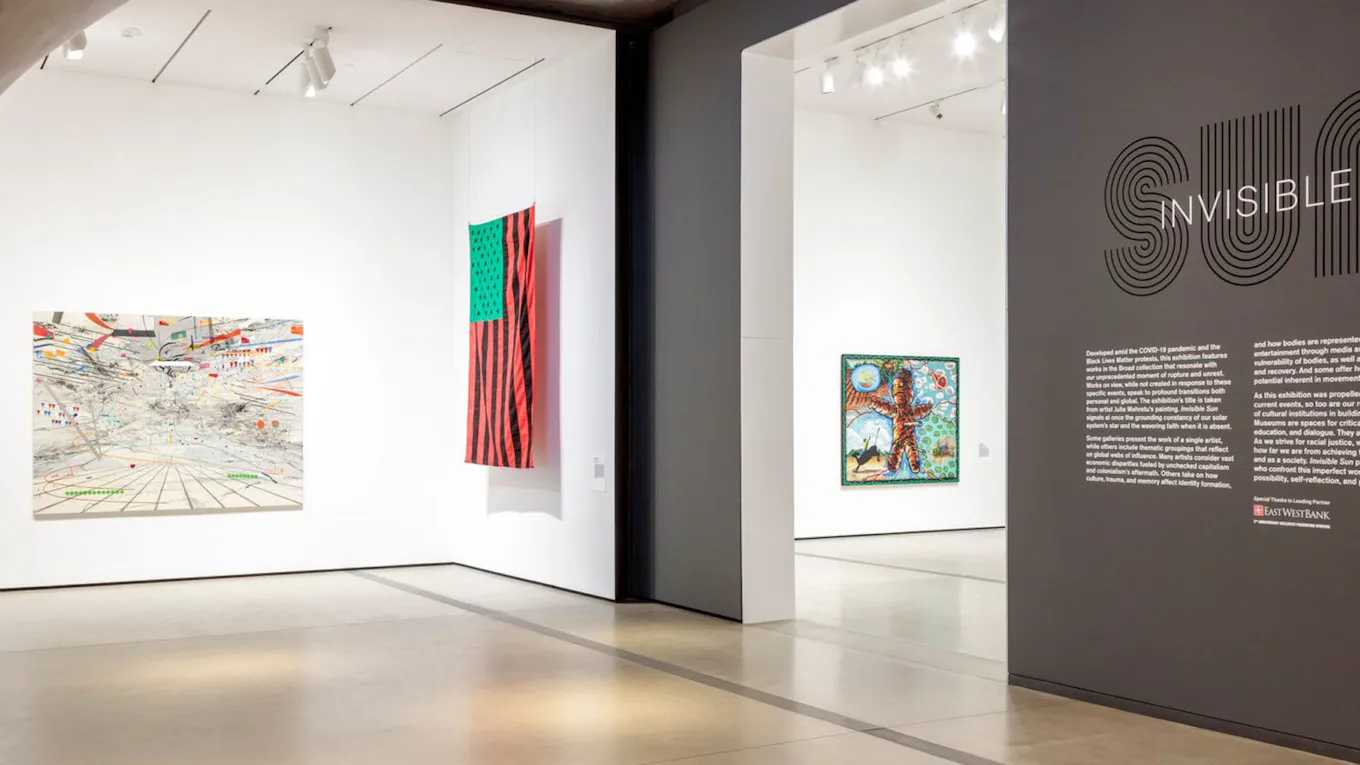Inside The Broad with founding director, Joanne Heyler

What led philanthropists Eli and Edythe Broad to found The Broad?
The Broads spent nearly fifty years building one of the world’s most significant collections of post-war and contemporary art. For decades they shared it generously by lending to many museums around the world, but ultimately realised that to reach as large an audience as possible, the collection needed its own public home.
How has Los Angeles influenced your view on art?
I grew up here and have always loved Los Angeles’ breadth. I think of LA as an ‘infinite city’ – not just because of its geography but because reading LA as a place is always a compelling challenge: it is vast in geography and reveals parts of itself in the least expected ways. The city keeps me hooked because there always seems to be more in store culturally. It’s an arts destination unlike any other city in the world, and while LA has many challenges, its optimism, potential and capacity to expand culturally are exciting.
What is different about LA’s arts scene?
Creativity and visual expression are woven into the fabric of the city’s culture and history, so ideas and discussions tend to cross-pollinate between various mediums. This dates far back in LA’s history, and yet, until recently, LA was considered a secondary arts city by many. There are serious roots here, nurtured for a long time almost exclusively by artists and a fairly small group of observers around those artists. This could be seen as an advantage: being outside mainstream views of what a contemporary art scene should be has allowed Los Angeles today to build a scene uniquely its own.
How does The Broad make contemporary art accessible to a wider audience?
We set out to make our museum feel different for visitors. Some of this involved very fresh but practical changes as we worked on the design. For example, we skipped the information/ticketing desk, you just interact with a staff member outside who scans your mobile. Most recently, during the Covid-19 era, our commitment to our mission to make the experience of art accessible for as wide an audience as possible led to developing The Broad From Home initiative. We produced a suite of new and original performances, talks and conversations, artist spotlights, and family workshops, all available to everyone, anywhere, on demand.
Why is it important to you to make art more accessible?
It’s important that museums evolve and serve communities differently and more genuinely than they have in the past. Art is an important facet of a healthy democracy, but museums have too often alienated audiences with a feeling of elitism and frankly a sense that museums are geared in various ways to older white audiences. This isn’t and wasn’t sustainable and museums must evolve in order to fulfil their missions.
What are you looking for when selecting artists’ work to feature?
The Broads’ style of collecting has been to follow artists over a long time – often many decades – so when we add artists, we focus on those we sense will endure. Early on Eli and Edye began collecting artists that were emerging and were early collectors of Jean-Michel Basquiat, who they knew personally, and of Barbara Kruger and Cindy Sherman – all three are now icons in the art world. Today we try to strike a balance with popular artists such as Andy Warhol, Roy Lichtenstein, Jeff Koons and Keith Haring, alongside contemporary artists such as Alex Israel, Oscar Murillo, Nathaniel Mary Quinn and Tauba Auerbach.
Why did you reopen with monograph installations by artists like Jean-Michel Basquiat?
This current group of extraordinary monograph installations is more ambitious than any we have ever featured before, because they were conceived in order to celebrate the 5th anniversary of the museum in 2020. They each take a deep dive into the work of icons of American post-war art and 1960s pop, key artists of the 1980s New York and Los Angeles art scenes and works by important figures of the 1990s to the present day. Many of these works are on view in the museum galleries for the very first time.
What are the museum’s future plans?
We intend to continue to grow the collection in ways that honour its roots and push it forward, and expand on our identity as an approachable and distinctly welcoming space. We also plan to organise and initiate more special exhibitions focused on artists that have much to say about our current moment. We’ll strive to continue to adapt to the needs of our audiences while celebrating Los Angeles and the growth and vibrancy of its arts community.
The Beverly Hills Hotel and Hotel Bel-Air are the perfect bases to explore The Broad’s eclectic collection of post-war and contemporary art.
Courtesy of The Board and Joshua White